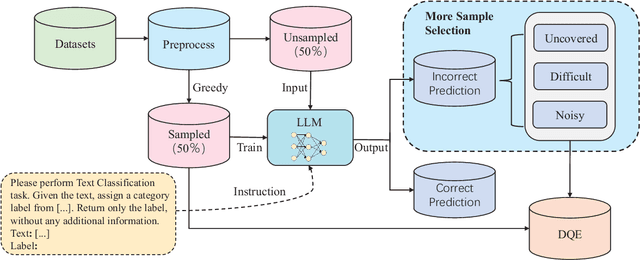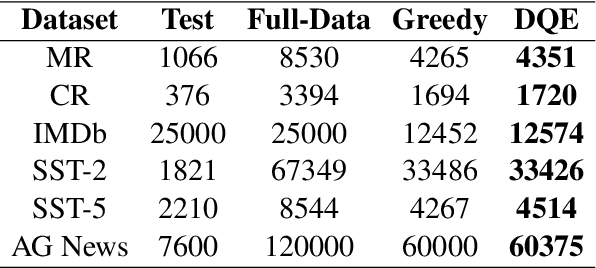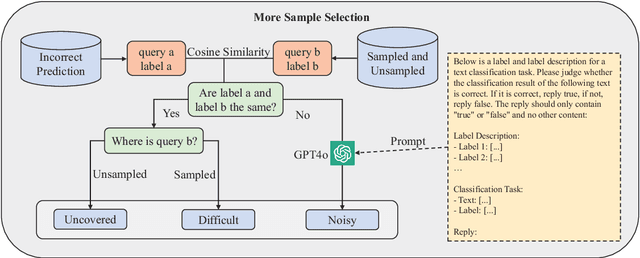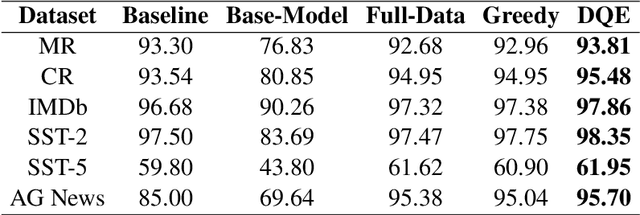Shiqi Zhang
GEM-Bench: A Benchmark for Ad-Injected Response Generation within Generative Engine Marketing
Sep 17, 2025Abstract:Generative Engine Marketing (GEM) is an emerging ecosystem for monetizing generative engines, such as LLM-based chatbots, by seamlessly integrating relevant advertisements into their responses. At the core of GEM lies the generation and evaluation of ad-injected responses. However, existing benchmarks are not specifically designed for this purpose, which limits future research. To address this gap, we propose GEM-Bench, the first comprehensive benchmark for ad-injected response generation in GEM. GEM-Bench includes three curated datasets covering both chatbot and search scenarios, a metric ontology that captures multiple dimensions of user satisfaction and engagement, and several baseline solutions implemented within an extensible multi-agent framework. Our preliminary results indicate that, while simple prompt-based methods achieve reasonable engagement such as click-through rate, they often reduce user satisfaction. In contrast, approaches that insert ads based on pre-generated ad-free responses help mitigate this issue but introduce additional overhead. These findings highlight the need for future research on designing more effective and efficient solutions for generating ad-injected responses in GEM.
Hybrid Disagreement-Diversity Active Learning for Bioacoustic Sound Event Detection
May 28, 2025Abstract:Bioacoustic sound event detection (BioSED) is crucial for biodiversity conservation but faces practical challenges during model development and training: limited amounts of annotated data, sparse events, species diversity, and class imbalance. To address these challenges efficiently with a limited labeling budget, we apply the mismatch-first farthest-traversal (MFFT), an active learning method integrating committee voting disagreement and diversity analysis. We also refine an existing BioSED dataset specifically for evaluating active learning algorithms. Experimental results demonstrate that MFFT achieves a mAP of 68% when cold-starting and 71% when warm-starting (which is close to the fully-supervised mAP of 75%) while using only 2.3% of the annotations. Notably, MFFT excels in cold-start scenarios and with rare species, which are critical for monitoring endangered species, demonstrating its practical value.
You Are What You Bought: Generating Customer Personas for E-commerce Applications
Apr 24, 2025Abstract:In e-commerce, user representations are essential for various applications. Existing methods often use deep learning techniques to convert customer behaviors into implicit embeddings. However, these embeddings are difficult to understand and integrate with external knowledge, limiting the effectiveness of applications such as customer segmentation, search navigation, and product recommendations. To address this, our paper introduces the concept of the customer persona. Condensed from a customer's numerous purchasing histories, a customer persona provides a multi-faceted and human-readable characterization of specific purchase behaviors and preferences, such as Busy Parents or Bargain Hunters. This work then focuses on representing each customer by multiple personas from a predefined set, achieving readable and informative explicit user representations. To this end, we propose an effective and efficient solution GPLR. To ensure effectiveness, GPLR leverages pre-trained LLMs to infer personas for customers. To reduce overhead, GPLR applies LLM-based labeling to only a fraction of users and utilizes a random walk technique to predict personas for the remaining customers. We further propose RevAff, which provides an absolute error $\epsilon$ guarantee while improving the time complexity of the exact solution by a factor of at least $O(\frac{\epsilon\cdot|E|N}{|E|+N\log N})$, where $N$ represents the number of customers and products, and $E$ represents the interactions between them. We evaluate the performance of our persona-based representation in terms of accuracy and robustness for recommendation and customer segmentation tasks using three real-world e-commerce datasets. Most notably, we find that integrating customer persona representations improves the state-of-the-art graph convolution-based recommendation model by up to 12% in terms of NDCG@K and F1-Score@K.
Robo-Troj: Attacking LLM-based Task Planners
Apr 23, 2025Abstract:Robots need task planning methods to achieve goals that require more than individual actions. Recently, large language models (LLMs) have demonstrated impressive performance in task planning. LLMs can generate a step-by-step solution using a description of actions and the goal. Despite the successes in LLM-based task planning, there is limited research studying the security aspects of those systems. In this paper, we develop Robo-Troj, the first multi-trigger backdoor attack for LLM-based task planners, which is the main contribution of this work. As a multi-trigger attack, Robo-Troj is trained to accommodate the diversity of robot application domains. For instance, one can use unique trigger words, e.g., "herical", to activate a specific malicious behavior, e.g., cutting hand on a kitchen robot. In addition, we develop an optimization method for selecting the trigger words that are most effective. Through demonstrating the vulnerability of LLM-based planners, we aim to promote the development of secured robot systems.
Fighting Fire with Fire: Channel-Independent RF Fingerprinting via the Ratio of Linear to Logarithmic Differential Spectrum
Mar 28, 2025Abstract:Eliminating the influence of temporally varying channel components on the radio frequency fingerprint (RFF) extraction has been an enduring and challenging issue. To overcome this problem, we propose a channel-independent RFF extraction method inspired by the idea of 'fighting fire with fire'. Specifically, we derive the linear differential spectrum and the logarithmic differential spectrum of the channel frequency responses (CFRs) from the received signals at different times, and then calculate the ratio of the two spectrums. It is found that the division operation effectively counteracts the channel effects, while simultaneously preserving the integrity of the RFFs. Our experiments on LTE-V2X, LoRa and Wi-Fi devices show that the proposed method achieves an average identification accuracy exceeding 95% across various environments.
Plan-over-Graph: Towards Parallelable LLM Agent Schedule
Feb 20, 2025



Abstract:Large Language Models (LLMs) have demonstrated exceptional abilities in reasoning for task planning. However, challenges remain under-explored for parallel schedules. This paper introduces a novel paradigm, plan-over-graph, in which the model first decomposes a real-life textual task into executable subtasks and constructs an abstract task graph. The model then understands this task graph as input and generates a plan for parallel execution. To enhance the planning capability of complex, scalable graphs, we design an automated and controllable pipeline to generate synthetic graphs and propose a two-stage training scheme. Experimental results show that our plan-over-graph method significantly improves task performance on both API-based LLMs and trainable open-sourced LLMs. By normalizing complex tasks as graphs, our method naturally supports parallel execution, demonstrating global efficiency. The code and data are available at https://github.com/zsq259/Plan-over-Graph.
OG-Gaussian: Occupancy Based Street Gaussians for Autonomous Driving
Feb 20, 2025Abstract:Accurate and realistic 3D scene reconstruction enables the lifelike creation of autonomous driving simulation environments. With advancements in 3D Gaussian Splatting (3DGS), previous studies have applied it to reconstruct complex dynamic driving scenes. These methods typically require expensive LiDAR sensors and pre-annotated datasets of dynamic objects. To address these challenges, we propose OG-Gaussian, a novel approach that replaces LiDAR point clouds with Occupancy Grids (OGs) generated from surround-view camera images using Occupancy Prediction Network (ONet). Our method leverages the semantic information in OGs to separate dynamic vehicles from static street background, converting these grids into two distinct sets of initial point clouds for reconstructing both static and dynamic objects. Additionally, we estimate the trajectories and poses of dynamic objects through a learning-based approach, eliminating the need for complex manual annotations. Experiments on Waymo Open dataset demonstrate that OG-Gaussian is on par with the current state-of-the-art in terms of reconstruction quality and rendering speed, achieving an average PSNR of 35.13 and a rendering speed of 143 FPS, while significantly reducing computational costs and economic overhead.
KET-RAG: A Cost-Efficient Multi-Granular Indexing Framework for Graph-RAG
Feb 13, 2025



Abstract:Graph-RAG constructs a knowledge graph from text chunks to improve retrieval in Large Language Model (LLM)-based question answering. It is particularly useful in domains such as biomedicine, law, and political science, where retrieval often requires multi-hop reasoning over proprietary documents. Some existing Graph-RAG systems construct KNN graphs based on text chunk relevance, but this coarse-grained approach fails to capture entity relationships within texts, leading to sub-par retrieval and generation quality. To address this, recent solutions leverage LLMs to extract entities and relationships from text chunks, constructing triplet-based knowledge graphs. However, this approach incurs significant indexing costs, especially for large document collections. To ensure a good result accuracy while reducing the indexing cost, we propose KET-RAG, a multi-granular indexing framework. KET-RAG first identifies a small set of key text chunks and leverages an LLM to construct a knowledge graph skeleton. It then builds a text-keyword bipartite graph from all text chunks, serving as a lightweight alternative to a full knowledge graph. During retrieval, KET-RAG searches both structures: it follows the local search strategy of existing Graph-RAG systems on the skeleton while mimicking this search on the bipartite graph to improve retrieval quality. We evaluate eight solutions on two real-world datasets, demonstrating that KET-RAG outperforms all competitors in indexing cost, retrieval effectiveness, and generation quality. Notably, it achieves comparable or superior retrieval quality to Microsoft's Graph-RAG while reducing indexing costs by over an order of magnitude. Additionally, it improves the generation quality by up to 32.4% while lowering indexing costs by around 20%.
Data Quality Enhancement on the Basis of Diversity with Large Language Models for Text Classification: Uncovered, Difficult, and Noisy
Dec 10, 2024



Abstract:In recent years, the use of large language models (LLMs) for text classification has attracted widespread attention. Despite this, the classification accuracy of LLMs has not yet universally surpassed that of smaller models. LLMs can enhance their performance in text classification through fine-tuning. However, existing data quality research based on LLMs is challenging to apply directly to solve text classification problems. To further improve the performance of LLMs in classification tasks, this paper proposes a data quality enhancement (DQE) method for text classification based on LLMs. This method starts by using a greedy algorithm to select data, dividing the dataset into sampled and unsampled subsets, and then performing fine-tuning of the LLMs using the sampled data. Subsequently, this model is used to predict the outcomes for the unsampled data, categorizing incorrectly predicted data into uncovered, difficult, and noisy data. Experimental results demonstrate that our method effectively enhances the performance of LLMs in text classification tasks and significantly improves training efficiency, saving nearly half of the training time. Our method has achieved state-of-the-art performance in several open-source classification tasks.
NeuroFly: A framework for whole-brain single neuron reconstruction
Nov 07, 2024



Abstract:Neurons, with their elongated, tree-like dendritic and axonal structures, enable efficient signal integration and long-range communication across brain regions. By reconstructing individual neurons' morphology, we can gain valuable insights into brain connectivity, revealing the structure basis of cognition, movement, and perception. Despite the accumulation of extensive 3D microscopic imaging data, progress has been considerably hindered by the absence of automated tools to streamline this process. Here we introduce NeuroFly, a validated framework for large-scale automatic single neuron reconstruction. This framework breaks down the process into three distinct stages: segmentation, connection, and proofreading. In the segmentation stage, we perform automatic segmentation followed by skeletonization to generate over-segmented neuronal fragments without branches. During the connection stage, we use a 3D image-based path following approach to extend each fragment and connect it with other fragments of the same neuron. Finally, human annotators are required only to proofread the few unresolved positions. The first two stages of our process are clearly defined computer vision problems, and we have trained robust baseline models to solve them. We validated NeuroFly's efficiency using in-house datasets that include a variety of challenging scenarios, such as dense arborizations, weak axons, images with contamination. We will release the datasets along with a suite of visualization and annotation tools for better reproducibility. Our goal is to foster collaboration among researchers to address the neuron reconstruction challenge, ultimately accelerating advancements in neuroscience research. The dataset and code are available at https://github.com/beanli161514/neurofly
 Add to Chrome
Add to Chrome Add to Firefox
Add to Firefox Add to Edge
Add to Edge